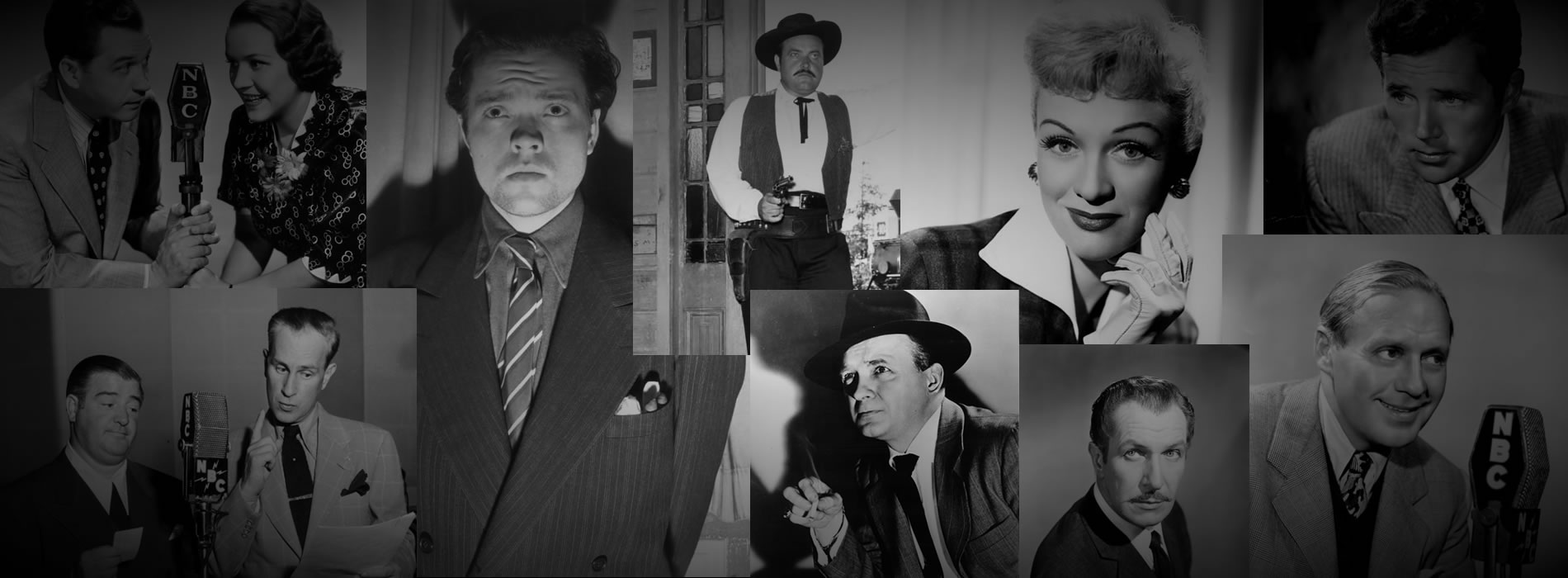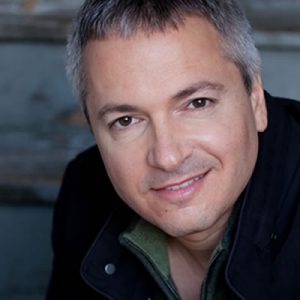
NEWSLETTER | VOL. 13, May 2022
Welcome to this month’s edition of The Hollywood 360 Newsletter, your place to get all the news on upcoming shows, schedule and interesting facts from your H360 team!
Carl’s Corner
by Carl Amari
Hello everyone – here’s the Hollywood 360 Newsletter, May 2022 / Vol. 13. As someone on our mailing list, you’ll receive the most current newsletter via email on the first day of every month. If you don’t receive it by the end of the first day of the month, check your spam folder as they often end up there. If it is not in your regular email box or in your spam folder, contact me at carlpamari@gmail.com and I’ll forward you a copy. The monthly Hollywood 360 newsletter contains articles from my team and the full month’s detailed schedule of classic radio shows that we will be airing on Hollywood 360. Each month I’ll write an article on one of the classic radio shows we’ll present on Hollywood 360. The week of May 14th, 2022 we’ll be airing an episode of The Great Gildersleeve starring Harold Peary so here’s an article on this wonderful comedy series. Enjoy!
The Great Gildersleeve
By Carl Amari and Martin Grams
Throckmorton P. Gildersleeve was a popular character appearing regularly on the radio sitcom Fibber McGee & Molly. Gildersleeve was the perfect foil for Fibber McGee and he was also his next-door neighbor. On one occasion, Gildy and Fibber solved a dispute by battling it out with water hoses.
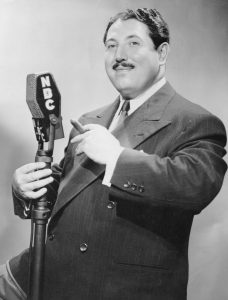 Radio veteran, Harold “Hal” Peary originated the role of Throckmorton P. Gildersleeve. Gildersleeve was so popular that on August 31, 1941, the character landed his own situation comedy show, The Great Gildersleeve, becoming radio’s first spin-off. Gildy moved from the town of Wistful Vista to Summerfield, where he became the town’s water commissioner and raised his orphaned niece and nephew, Marjorie (originally played by Lurene Tuttle and followed by Louise Erickson and Mary Lee Robb) and Leroy (Walter Tetley). Over the run, Marjorie would grow up, get married to Walter “Bronco” Thompson (Richard Crenna) and have twins. The household also included a cook and housekeeper named Birdie Lee Coggins (Lillian Randolph). Others in Gildersleeve’s world were Judge Horace Hooker (Earle Ross), Floyd Munson the Barber (Arthur Q. Bryan), drug store owner Mr. Peavey (Richard LeGrand), Police Chief Don Gates (Ken Christy) and Gildy’s neighbor – who he often had disputes with – Rumson Bullard (Gale Gordon).
Radio veteran, Harold “Hal” Peary originated the role of Throckmorton P. Gildersleeve. Gildersleeve was so popular that on August 31, 1941, the character landed his own situation comedy show, The Great Gildersleeve, becoming radio’s first spin-off. Gildy moved from the town of Wistful Vista to Summerfield, where he became the town’s water commissioner and raised his orphaned niece and nephew, Marjorie (originally played by Lurene Tuttle and followed by Louise Erickson and Mary Lee Robb) and Leroy (Walter Tetley). Over the run, Marjorie would grow up, get married to Walter “Bronco” Thompson (Richard Crenna) and have twins. The household also included a cook and housekeeper named Birdie Lee Coggins (Lillian Randolph). Others in Gildersleeve’s world were Judge Horace Hooker (Earle Ross), Floyd Munson the Barber (Arthur Q. Bryan), drug store owner Mr. Peavey (Richard LeGrand), Police Chief Don Gates (Ken Christy) and Gildy’s neighbor – who he often had disputes with – Rumson Bullard (Gale Gordon).
The Great Gildersleeve was the first show to be centered on a single parent balancing raising children, work, and a social life, accomplished with taste and genuine wit, often at the expense of Gildersleeve’s slightly understated pomposity. Gildersleeve dated a bevy of woman over the show’s run, including Leila Ransom (Shirley Mitchell), Eve Goodwin (Bea Benaderet) and Katherine Milford (Cathy Lewis) but never married — he did get close though in 1943 but was left at the alter by Leila Ransom. Gildersleeve’s inept, milkshake loving secretary, Bessie, was played by Gloria Holiday, who become Mrs. Harold Peary in real life.
The radio series was so popular it spanned a series of movies: The Great Gildersleeve (1942), Gildersleeve’s Bad Day (1943), Gildersleeve on Broadway (1943) and Gildersleeve’s Ghost (1944). Harold Peary, as Throckmorton P. Gildersleeve, also co-starred in the Lucille Ball/Victor Mature musical-comedy Seven Days’ Leave (1942).
Harold Peary left the series at the height of its popularity in 1950 giving way to Peary-sound-a-like and well-known character actor, Willard Waterman. As with most radio sitcoms still on the air in the early 1950s, The Great Gildersleeve began a slow but distinct reformat. Starting in mid 1952, some of the program’s longtime characters were missing for months at a time, while new characters – that never caught on – took their place. In November of 1954, after an extended summer hiatus, the show was reformatted as a 15-minute daily sitcom. Only Gildersleeve, Leroy and Birdie remained on a continuing basis. All other characters were seldom heard, and gone were Marjorie and her family as well as the studio audience, live orchestra and original scripts. Waterman continued in the radio role until 1958 and also played Gildersleeve in a 39-episode TV version that was first syndicated in 1955.
LEND ME YOUR EARS | THIS MONTH’S SONG: WE DIDN’T START THE FIRE by Billy Joel, RELEASED: 1989
by Lisa Wolf
“What does the song really mean? Is it an apology for the baby boomers? No, it’s not. It’s just a song that says the world’s a mess. It’s always been a mess, it’s always going to be a mess.” ~ Billy Joel
“We Didn’t Start the Fire” was a huge success when it was released in 1989. It was Billy Joel’s third Billboard No. 1 hit and was nominated for the Grammy Award for Record of the Year. It’s also a great summary of history for the second half of the 20th Century. Its lyrics include brief, rapid-fire allusions to more than 100 headline events between January 1949 (Billy Joel was born on May 9 of that year) and 1989, when the song was released on his album Storm Front.
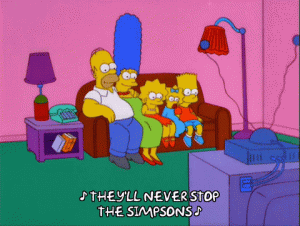 The first two lines refer to the year 1949, and every two lines reflect the next year, until the final verse, when he mentions the film Psycho by Alfred Hitchcock, and he imitates the screeching violins that were considered a staple of the movie.
The first two lines refer to the year 1949, and every two lines reflect the next year, until the final verse, when he mentions the film Psycho by Alfred Hitchcock, and he imitates the screeching violins that were considered a staple of the movie.
In the liner notes of Piano Man: The Very Best of Billy Joel, he explains that he wrote this song after a conversation with Sean Lennon and a friend. Sean’s friend apparently said that they were growing up in troubling times, thanks in large part to the Baby Boomer generation. Joel’s main message in “We Didn’t Start the Fire” is that his generation (the Baby Boomers) also dealt with troubling times that they didn’t necessarily cause. Billy Joel told Billboard Magazine: “It’s terrible musically. It’s like a mosquito buzzing around your head” and has said in other interviews that it is a nightmare to perform.
Many parodies and takeoffs have been based on the song, including The Simpsons’ parody “They’ll Never Stop the Simpsons” at the end of the 2002 “Gump Roast” episode.
Billy Joel will be releasing a 25-minute sequel to We Didn’t Start The Fire about the historic events of 2020.

RADIO NOIR: A Brief Introduction
by Karl Schadow
Upon listening to an episode featuring the exploits of Sam Spade or Philip Marlowe, or a shocker on Suspense, were you aware of being captivated by radio noir? Despite the popularity these programs enjoyed during their tenures on the etherwaves, there is a paucity of material that has delved specifically on the noir aspects of these particular series as well as the aural medium overall. Compared to the volumes available illustrating film noir, there exists merely a handful of analyses regarding its radio cousin. Selected highlights from those studies serve as an introduction to this neglected are of radio’s history.
In The Big Book of Noir (1998), broadcast historian Bill Nadel asks the key question: “How could the stark, bitter, brutal dramatic world of the movies make it on radio?” He then presents elements from various programs calling attention to the writing, acting, sound effects and music; those components effectively merged to culminate in a thrilling drama. In addition to those programs noted above, Nadel also cites The Thin Man (which debuted on radio during the early 1940s) along with lesser-known gumshoe Barrie Craig, Confidential Investigator (a staple of the 1950s) as programs which epitomized the noir genre. In the case of the script writer, Nadel praises the work of Lawrence Klee on The Fat Man which starred the rotund J. Scott Smart as private eye Brad Runyon. Other standout actors recognized included Van Heflin and Gerald Mohr each of whom portrayed Philip Marlowe in different network versions of the Raymond Chandler creation.
 While the Nadel analysis provides a comprehensive overview highlighting programs and personalities, Jesse Schlotterbeck (A Companion to Film Noir, 2013) scrutinizes the film and radio iterations of various productions including The File on Thelma Jordan. This 1950 Paramount Pictures release was transformed a year later into an hour-long session of The Screen Director’s Playhouse. In comparing several early scenes of both versions, Schlotterbeck determined that there was a tradeoff in the effectiveness of their respective performances. Thus, in certain instances, the aural medium had accomplished its entertainment goals. Another series discussed was The Mollé Mystery Theatre in which the 1946 episode “Killer Come Back to Me” was noted as a good example of the use of confounding soundscape (conflict between the narrative and actual scene). This original story by Ray Bradbury was his first to be adapted for radio. It was published in the July 1944 issue of Detective Tales. This magazine and numerous other pulp periodicals were a great source of noir material for the radio writer and producer.
While the Nadel analysis provides a comprehensive overview highlighting programs and personalities, Jesse Schlotterbeck (A Companion to Film Noir, 2013) scrutinizes the film and radio iterations of various productions including The File on Thelma Jordan. This 1950 Paramount Pictures release was transformed a year later into an hour-long session of The Screen Director’s Playhouse. In comparing several early scenes of both versions, Schlotterbeck determined that there was a tradeoff in the effectiveness of their respective performances. Thus, in certain instances, the aural medium had accomplished its entertainment goals. Another series discussed was The Mollé Mystery Theatre in which the 1946 episode “Killer Come Back to Me” was noted as a good example of the use of confounding soundscape (conflict between the narrative and actual scene). This original story by Ray Bradbury was his first to be adapted for radio. It was published in the July 1944 issue of Detective Tales. This magazine and numerous other pulp periodicals were a great source of noir material for the radio writer and producer.
A study by Jeff Ousborne (Clues, Fall 2016) focused on the evolution of one individual: Jack Webb, who during his career on radio, metamorphosed from anti-hero Pat Novak (and later as Mutual network clone, Johnny Madero) to the pinnacle of law enforcement, Sgt. Joe Friday on Dragnet. In Broadway Is My Beat, Detective Danny Clover covered one of the grittiest sections of The Big Apple. After several months on the airwaves, this series hit its stride in November of 1949 upon the enlistment of Elliott Lewis as the director. In addition to adding many actual New York City-street sounds, he also introduced the signature theme “Manhattan.” Another series headlining the hard-boiled law enforcement officer was The Man from Homicide with Dan Duryea as Lt. Lou Dana. The history of this program has been recently elucidated. See Microsoft Word – 2021_04 JulyAugust.docx (otrr.org)
There is one radio series which did not feature a professional detective and that is arguably radio’s best contribution to the noir genre: Night Beat. Frank Lovejoy starred as columnist Randy Stone for the fictional Chicago Star roaming The Windy City’s bleakest hours in search of human-interest fodder. Some of the finest performances that this series (and the medium) had to offer were the episodes in which Lovejoy starred opposite his wife Joan Banks. One installment in particular, “Somebody Stop Ann” (August 7, 1952) has the reporter attempting to thwart a femme fatale. This character type always enhanced any noir escapade.
The next time you are enjoying an episode of any one of the radio series cited above, take a little extra time to ponder those aspects which make these programs admirable contributions to the noir genre.
Contact author at khschadow@gmail.com
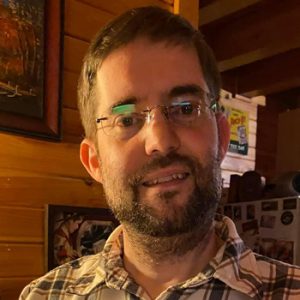
MartinGrams.biz: KING KONG: PEOPLE WENT APE FOR HIM ON RADIO TOO!
by Martin Grams

The Old Ranger
Formulaic and weekly radio broadcasts often steered away from the established formula – briefly – during the holiday season. When Death Valley Days premiered in the fall of 1930, the majority of radio broadcasts consisted of musical offerings and Christmas Carols that the American public often found on street corners and the local church were now a regular staple on the airwaves.
Hoping to provide a light-hearted look of peace and forgiveness through an intrinsic part of the regular broadcast season, Death Valley Days provided some of the more touching reminders that Christmas should be reflected 365 days a week. Because the program was a Western anthology, based on true accounts reported in newspapers and published reference guides, Death Valley Days was unable to reflect current domestic issues with a touch of the festivities. Since most radio programs ultimately accomplished that goal every December, Death Valley Days provided a unique perspective of a nostalgic time gone by… and in one case sprinkled with small opera. Where horror programs provided a more Charles Dickens-style of gothic story telling, and comedic sitcoms provided annual musical tributes, with Grumpy characters displaying a soft-heart, Death Valley Days chose to offer a slice of commercialism in the form of product placement.
Of the 714 radio broadcasts under the Death Valley Days name, the official count of radio broadcasts existing in recorded form is six. Two of them were recorded for historical reasons; four exist for varied reasons that remain unknown. The reason why the remaining 708 radio broadcasts do not exist was, according to an inter-office memo with the sponsor, the Pacific Coast Borax Company, and the advertising agency, McCann-Erickson, was a business decision. Executives at PCB saw no financial benefit to recording the broadcasts, beyond production costs, billed monthly. As a result, fans of the program seeking “lost” episodes have a challenge seeking out recordings of the radio broadcasts… they probably do not exist. The service provided by executives at McCann-Erickson was considered a “throw-away” product. After the completion of each broadcast, the scripts were piled in a box near the doorway to the studio and Ruth Woodman, the scriptwriter responsible for the transition of legends and lore of Death Valley to radio, was hard at work on the next production.

Radio script of DEATH VALLEY DAYS.
Thankfully, all of the radio scripts exist, providing details for archivists and historians to consult for documentary purposes. And a recent examination of those scripts reveals much more than the entries found in encyclopedias. Cast details now provide exact dates of when each actor played the role of The Old Ranger, the narrator of each broadcast. Missing titles have been filled in from a broadcast log compiled by Ray Stanich in the eighties. Music cues verify what songs The Singing Cowboy offered each week. Verification that the first few months of broadcasts were not adaptations of stories Ruth Woodman gathered out West during her business trips, but of material contained within encyclopedias and reference books about Death Valley.
The Furnace Creek Inn was built by the Pacific Coast Borax Company (of the Twenty Mule Team fame) as a means to save their newly built Death Valley Railroad. Mines had closed and shipping transportation was no longer needed, but mining tourist pockets seemed a sure way to keep the narrow-gauge line active. The Borax company realized travelers by train would need a place to stay and wealthy visitors accustomed to comfort would be attracted to a luxury hotel.
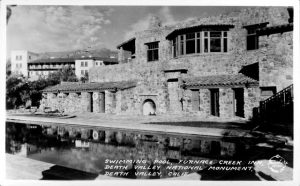
Furnace Creek Inn
First opened for business in 1927, the Furnace Creek Inn was an immediate success. Unfortunately for the mining company, their railroad closed forever in 1930 when it became apparent tourists preferred the freedom of arriving to Death Valley in their own cars. This was where radio came in. The McCann-Erickson Advertising Agency gained the Pacific Coast Borax Company as a client in 1925, when they began a heavy magazine and newspaper campaign. In the summer of 1930, they encouraged their client to sponsor a radio program, Death Valley Days, and each week the dramas helped promote the strive of human nature amidst the conflict of man, beast and mother nature. Beginning in late November 1930, each broadcast closed with a mention about the Furnace Creek Inn, and radio listeners could write for a free pamphlet providing all the necessary details to vacation there during the holiday.
For the broadcast of December 23, 1930, “Christmas at Furnace Creek Inn” provided two, fifteen-minute stories. A dramatization of the first Christmas that was ever observed in Death Valley, in 1849, when a group of emigrants looking for a short cut to the California gold fields, stumbled into Death Valley by mistake. The party of pioneers found themselves trapped in the Valley for months but never lost their faith and courage. Then The Old Ranger participated as a cast member in a dramatization of last year’s Christmas Party at Furnace Creek Inn, 1929, with Frank Tilton (retired driver of the 20-Mule Teams), John White (a.k.a. the Lonesome Cowboy), and a crowd of holiday visitors. White sang two Christmas songs and a young man recited a Death Valley version of “The Night Before Christmas.” A Wandering Minstrel performed a couple songs, and the cast closed the broadcast with a rendition of “Silent Night.” (One wonders since The Old Ranger was a fictitious character, was this drama historically accurate?)
A story from the pages of O. Henry was recycled for the December 21, 1931 broadcast, titled “Santa Claus Visits Death Valley.” In the mining camp of Yellowhammer, a white man named Cherokee purchases a sealskin coat, a team and a red sleigh, along with hundreds of toys. Having served as the civic father of the town, leaving to strike a vein and return a wealthy man, he returns to Yellowhammer for Christmas in the regalia of a fat man from the North Pole, complete with tinsel and trees… unaware that there are no women or children in town. The youngest kid in Yellowhammer packs a .45 and a safety razor. It didn’t take long for the whole town of Yellowhammer to approve of the scheme of importing a load of kids for Cherokee’s Christmas party. Everybody who knew of families with offspring within a forty-mile radius of the camp, came forward with information. But folks didn’t think kindly to the idea of parting with their children with strangers. The only child they could round up was a ten-year-old spoiled brat named Bobby, armed with a sharp tongue and likes to smoke tobacco. His widowed mother has been too busy putting food on the table to take care of his table manners. Bobby won’t cooperate during the festivities and Santa, a.k.a. Cherokee, arrives to discover his entire Christmas is spoiled for lack of children… until he discovers that Bobby’s mother has a photo of Cherokee in her bedroom. It only takes a couple minutes for Cherokee to realize that regardless of the fact that there are no women or children about… his Christmas is best served with the family he thought he lost – Bobby is his son.
Topical subject matter of the times, this episode opens with a man and woman seeking a child for Christmas, local charity organizations, church and an orphan asylum, only to discover that the demand for youngsters at Christmas time was so much greater than the supply.
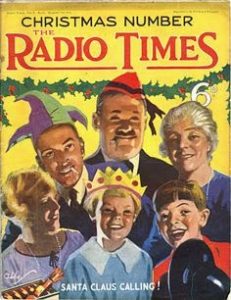 In “Death Valley Pete’s Christmas Party,” broadcast December 22, 1932, a gathering of the relatives of Death Valley Pete on Christmas Day, 1883, is dramatized. In the old mining camp of Darwin, just beyond the Panamints, Death Valley Pete is longing for his own kin… but he knows of no one alive with his own flesh and blood, named Abercrombie. Taking advice from a lawyer, he places an ad in the newspaper. Pete struck a gold claim and made a hundred thousand dollars – and now fears that fakers from all over will stake a claim on him. But Pete wants only the legit for a Christmas dinner, completely surrounded by relatives. His fiancée, Madge, won’t have anything of it until she sees the black sheep of the family – every visitor arriving in town – and how Pete acts like a real gentleman on the occasion. After all, a man can’t help the relatives he’s got but thank God he can pick his own wife! (And yes, the Furnace Creek Inn was also promoted at the conclusion of the broadcast.)
In “Death Valley Pete’s Christmas Party,” broadcast December 22, 1932, a gathering of the relatives of Death Valley Pete on Christmas Day, 1883, is dramatized. In the old mining camp of Darwin, just beyond the Panamints, Death Valley Pete is longing for his own kin… but he knows of no one alive with his own flesh and blood, named Abercrombie. Taking advice from a lawyer, he places an ad in the newspaper. Pete struck a gold claim and made a hundred thousand dollars – and now fears that fakers from all over will stake a claim on him. But Pete wants only the legit for a Christmas dinner, completely surrounded by relatives. His fiancée, Madge, won’t have anything of it until she sees the black sheep of the family – every visitor arriving in town – and how Pete acts like a real gentleman on the occasion. After all, a man can’t help the relatives he’s got but thank God he can pick his own wife! (And yes, the Furnace Creek Inn was also promoted at the conclusion of the broadcast.)
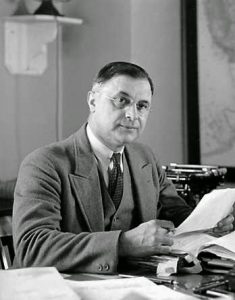 Christmas was acknowledged in “Rates on Request,” broadcast December 21, 1933, but the drama did not take place during the holiday. The December 28 broadcast took place in a snowstorm, but again, did not take place during the holiday season. A seasonal offering was provided on December 20, 1934, “While Rome Burns,” dramatizing the events of December 23, 1923. Preparing for a Christmas party in a Nevada mining camp, the Christmas celebration put on by the church used to be a real community affair and everybody in the camp was invited. It didn’t make any difference who they were. But dance hall girls, tin-horns and bartenders were no longer invited. Late that evening, a fire broke out and several buildings caught flame as a result of the wind. Everything in the business section was wiped out along Main Street. Every store and restaurant and rooming house – and both churches. Everything went up in smoke – Christmas trees, gifts and everything necessary for the festivities. When dance hall girl Goldie discovers that children will go without presents or Santa Claus, she orchestrates a Christmas that the families will never forget. In the surviving church on the hill that night, a great tree glittered. Santa Claus distributed presents to every beaming child. And the prejudice found contentment at the organ as the crowd sang Christmas carols – three religious communities acting as one again.
Christmas was acknowledged in “Rates on Request,” broadcast December 21, 1933, but the drama did not take place during the holiday. The December 28 broadcast took place in a snowstorm, but again, did not take place during the holiday season. A seasonal offering was provided on December 20, 1934, “While Rome Burns,” dramatizing the events of December 23, 1923. Preparing for a Christmas party in a Nevada mining camp, the Christmas celebration put on by the church used to be a real community affair and everybody in the camp was invited. It didn’t make any difference who they were. But dance hall girls, tin-horns and bartenders were no longer invited. Late that evening, a fire broke out and several buildings caught flame as a result of the wind. Everything in the business section was wiped out along Main Street. Every store and restaurant and rooming house – and both churches. Everything went up in smoke – Christmas trees, gifts and everything necessary for the festivities. When dance hall girl Goldie discovers that children will go without presents or Santa Claus, she orchestrates a Christmas that the families will never forget. In the surviving church on the hill that night, a great tree glittered. Santa Claus distributed presents to every beaming child. And the prejudice found contentment at the organ as the crowd sang Christmas carols – three religious communities acting as one again.
The December 19, 1935 broadcast offered a special “National Park Program,” dramatizing multiple events when people celebrated Christmas in Death Valley. The holiday theme provided a major public service: awareness of the United States National Park Service. Mr. Arno B. Crammerer, director of the U.S. NPS, gave a speech at the conclusion of the program, reminding them that Death Valley was one of the National Park monuments and the National Park was a logical product of our democracy.
In “…Children’s Faces, Looking Up,” broadcast December 25, 1936, widow Lottie Marvin is forced to stay home after the death of her husband, in order to care for her young son, severely injured in a fire. At first she debated going back to work, but when other employees of the mining office discovered she could babysit and feed their children for a small fee, she ultimately opened up a full-fledged day nursery. On Christmas Eve, she is offered her old job with more pay and weighs the heavy burden of making an important decision. When the children she took care of paid her a late-night visit singing Christmas Carols, she agrees that her self-employment is more important and counts her blessings.
The Old Ranger invites the radio listeners to imagine opening night of “Piper’s Opera House” on the evening of December 23, 1937, which opened doros for the first time on July 2, 1863. Virginia City had more money to pay for good entertainment and actors who had avoided mining camps, offered to appear at Piper’s. Singers touring the country included Virginia City in their itinerary. Famous lecturers traveled there. The drama included excerpts from the stage productions of Uncle Tom’s Cabin, Hamlet and Rip Van Winkle, to name a few, the highlight came on December evening: the appearance of Adah Isaacs Menken in the role of the young hero in Mazeppa – the Wild Horses of Tartary… the most breath-taking experience that Piper’s ever offered.
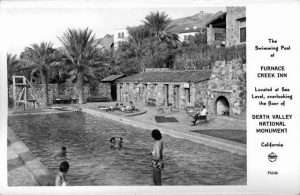
In “The Stranger Who Sang,” broadcast December 23, 1938, The Old Ranger recounts some years ago when the Furnace Creek Inn had just been built; just enough to accommodate a handful of guests. Roads through the desert were still questionable. There was no direct telephone communication to and from the Valley. It was no wonder that the little group of guests who gathered around the big stone fireplace at the Inn on that particular Christmas Eve felt drawn together by their sheer remoteness from the rest of the world. Fresh logs blazed up on the hearth, reflecting the frosty silver of desert holly, massed in bowls around the room. Stockings were hung from the mantle place for the only two children in the place. When The Old Ranger asks the children why they made the trek from Michigan to Death Valley, young Judy explains that her mother had pneumonia and the doctor said she has to be where it was warm and dry. With mother in bed resting, Judy is upset when the tradition of having “Away in a Manger” sung to her on Christmas Eve is thrwated – even though her mother said Christmas is still Christmas no matter where they are. A stranger shows up at the Inn, seeking tobacco to smoke, and hearing the children’s dilemma, sings the song. This leads to “Silent Night,” “Good King Wencelas” and “Oh, Holy Night.” The stranger takes leave of the Inn but before he goes, he thanks the children “for helping me to find again what I thought I had lost forever.” Judy asks if he is referring to his voice and the stranger replies, “Something infinitely more precious than that. Peace on earth.” The stranger was gone before any of them had time to realize that they never caught the name of the stranger. Several months later, The Old Ranger happened to pick up a copy of a San Francisco newspaper with the headline, “Singer Returns to the Concert Stage.” It read that Eric Holden, famous baritone who had not returned for over a full year since the death of his little daughter.
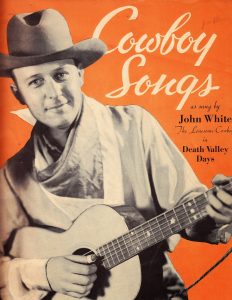
John White Sheet Music
Pacific Coast Borax obviously used Death Valley Days as a thirty-minute commercial for their vacation lodge, as well as promoting the benefits of Borax for use about the house. Christmas offered many challenges for Ruth Woodman, determined to find real stories about real people, for use on the program. But one thing was certain: Christmas was still commercial.
Episode Details
Episode #13 “CHRISTMAS AT FURNACE CREEK INN”
Broadcast Date: December 23, 1930
Script completed: December 13, 1930
Plot: The episode opens with The Old Ranger meeting a couple leaving Ludlow, California, about 175 miles from Death Valley, heading home to Kansas City for Christmas. The Old Ranger mentions he is traveling on the Tonopah and Tidewater, the railroad that the Pacific Coast Borax Company built to haul Borax. This episode featured two, fifteen-minute stories. The first dramatized the first Christmas that was ever observed in Death Valley, in 1849, when a group of emigrants looking for a short cut to the California gold fields, stumbled into Death Valley by mistake. The party of pioneers found themselves trapped in the Valley for months but never lost their faith and courage. Then The Old Ranger joined in a dramatization of last year’s Christmas Party at Furnace Creek Inn, 1929, with Frank Tilton (retired driver of the 20-Mule Teams), John White (a.k.a. the Lonesome Cowboy), and a crowd of holiday visitors. White sang two Christmas songs and a young man recited a Death Valley version of “The Night Before Christmas.” A Wandering Minstrel performed a couple songs, and the cast closed the broadcast with a rendition of “Silent Night.”
Episode #65 “SANTA CLAUS VISITS DEATH VALLEY”
Broadcast Date: December 21, 1931
Script completed: December 10, 1931
Cast: Virginia Gardiner, William Shelley, John MacBryde, John White (Curley, the guitar player), John Tucker Battle, Elsie Mae Gordon, Joseph Bell, and Vernon Radcliffe.
Plot: In the mining camp of Yellowhammer, Cherokee, purchases a sealskin coat, a team and a red sleigh, along with hundreds of toys. Cherokee was a white man known for living with the Indians for a spell, and served as the civic father of the town. He left town years ago and struck gold and now wants to return to Yellowhammer for Christmas in the regalia of a fat man from the North Pole, complete with tinsel and trees… unaware that there are no women or children in town. The youngest kid in Yellowhammer packs a .45 and a safety razor. It didn’t take long for the whole town of Yellowhammer to approve of the scheme of importing a load of kids for Cherokee’s Christmas party. Everybody who knew of families with offspring within a forty-mile radius of the camp, came forward with information. But folks didn’t think kindly to the idea of parting with their children with strangers. The only child they could round up was a ten-year-old spoiled brat named Bobby who likes to smoke and speak vile words. His widowed mother has been too busy putting food on the table to take care of his table manners. Bobby won’t cooperate when the festivities start until Santa, a.k.a. Cherokee, discovers the boy recognizes him without the false Santa beard. His mother has a photo of him in her bedroom. It only takes a couple minutes for Cherokee to realize that regardless of the fact that there are no women or children about… his Christmas is best served with the family he thought he lost – Bobby is his son.
Notes: This episode opens with a man and woman seeking a child for Christmas, local charity organizations, church and an orphan asylum, only to discover that the demand for youngsters at Christmas time was so much greater than the supply.
This story was also written up in a book by O. Henry.
The Old Ranger is also a participant in this story, which he rarely does – he’s usually just the narrator.
Episode #116 “DEATH VALLEY PETE’S CHRISTMAS PARTY”
Broadcast Date: December 22, 1932
Script completed: December 19, 1932
Cast: Peggy Allenby (Cecily, a young bride / Zora Sylvester); John Tucker Battle (Limpin’ Jim); Joseph Bell (Shorty Jackson / Bob, a young bridegroom / “Snake” Abercrombie); Tim Frawley (The Old Ranger); Jean King (Madge Daley); John MacBryde (Peter Lyle Abercrombie, a.k.a. Death Valley Pete, a prospector); Vernon Radcliffe (Jake Grannan / Peter Abercrombie); and John White (Limpin’ Jim, the guitar player).
Plot: A gathering of the relatives of Death Valley Pete on Christmas Day, 1883. In the old mining camp of Darwin, just beyond the Panamints, Death Valley Pete is longing for his own kin… but he knows of no one alive with his own flesh and blood, named Abercrombie. Taking advice from a lawyer, he puts an ad in the newspaper. Pete struck a gold claim and made a hundred thousand dollars – and now fears that fakers from all over will stake a claim on him. But Pete wants only the legit for a Christmas dinner, completely surrounded by relatives. The folks of Darwin was a bit riled over the way Peter cold-shouldered them in favor of a herd of relatives he never so much as laid eyes on. Every guest that arrived on Christmas Eve was disreputable and when Madge Daley, Pete’s fiancée, witnesses the black sheep of the family coming off the stage and Pete asking like a real gentleman on the occasion, she agrees to his proposal. After all, a man can’t help the relatives he’s got but thank God he can pick his own wife!
Notes: The Furnace Creek Inn is again pitched during the opening commercial. As George Hicks remarks, “Out in Death Valley, as everywhere else in the world, they’re getting ready for Christmas. Preparations are in full swing at Furnace Creek Inn, Great bushes of desert holly, with its silvery leaves and crimson stockings will be hung up on Christmas Eve by all the guests. In the kitchen… well, there seems to be enough food to take care of an organized famine. The pantry shelves are laden, and the refrigerators fairly bursting with good things to eat.”
Episode #168 “RATES ON REQUEST”
Broadcast Date: December 21, 1933
Script completed: December 20, 1933
Cast: Anthony Burger (Harry, hotel guest); Peg Allenby (Dolly, Ben’s sister); Tim Frawley (The Old Ranger); Millie June (Rose, hotel guest); John McBryde (Ben Brinsmade); Charles Slattery (Dusty Miller); and Edith Spencer (Madam X, a clairvoyant).
Singer: John White
Produced by Ed Whitney.
Announcer: George Hicks
Directed by Joseph Bonime.
Plot: Like many another 49’er, Ben Brinsmade learned that rainbows are long and that chasing them is heartbreaking, back-breaking work. It was yars before he finally reached the rainbow’s end and located his own particular pot of gold. He and his partner, old Dusty Miller, sold their stakes to a big mining company at a big price, pocketed the proceeds and then looked at each other and grinned. Ben wants to invest in the hotel business – a first-class hotel for transcontinental travelers. Sure enough, The Transcontinental Hotel on the Central Pacific Railroad in Eureka County, Nevada, was established. Difficulties and disappointments led to delays and no railroad. It was only a question of time before the span would be complete. In 1864, the railroad changed the line of survey and the trains wouldn’t come within fifty miles of the hotel. The Brinsmade family in the East never understood why Ben’s letters stopped suddenly. His parents reached old age and passed on. His younger sister, Dolly, grew up and got married. One day in 1889, Dolly paid a visit to a clairvoyant who was all the rage in Washington, D.C., who told her that Ben was still alive. Dolly wrote to the District Attorney of Eureka County, Nevada, to learn that her brother was living in a hotel off in the desert, fifty miles from the railroad. She paid a visit to the stoop-shouldered, white-haired old man who lives in an empty hotel and confesses that he won’t return to the East. “I’m happier here than I’d ever be anywhere else. I’ve got things that millionaires back in New York ain’t got… sunshine, pure desert air, space, silence… and peace.”
Songs: “Villikins and Dinah,” “Darling Nellie Gray” and a waltz. “Camptown Races” and “Little Brown Jug” were originally proposed for use on this episode, but never used.
Episode #169 “SNOWBOUND”
Broadcast Date: December 28, 1933
Script completed: December 27, 1933
Cast: John Battle (Pete Bradley); Tim Frawley (The Old Ranger); John McBride (Jim Tyson); Anne Elstner (Molly, Jim’s wife); Charles Slattery (a New England grocer / Harry, a prospector); Edith Spencer (the Grocer’s wife); John White (the singer, “Pretty Little Pink”); and Ed Whitney (Ike Jeffries / Tom, a prospector).
Produced by Ed Whitney.
Directed by Joseph Bonime.
Announcer: George Hicks
Plot: Stuck in a snowstorm at the general store, The Old Ranger recounts an incident involving a snowstorm back in 1869. Adolph Sutro proposes to dig a tunnel through the mountain, four miles long, making working conditions in the mine at Virginia City more suitable for the local miners, who agree to invest both financially and laboriously. The Bonanza Kings won’t invest, referring to the folly as “Sutro’s coyote hole.” Jim Tyson agrees to sponsor $100, against the wishes of his wife, Molly. In 1878, Sutra himself fired the blast that connected the tunnel with the great mines of Virginia City. On a January evening in 1895, Jim was fighting his way through the blinding snow when he arrived at the general store to discover there was no more food or supplies. The wagons could not travel to the city through the blizzard that didn’t let up and increased in fury. When it occurs to Jim to use Sutro’s tunnel as a means of traveling down the mountain, a few miles below the mouth of the tunnel was the town of Dayton. Molly thinks the trek is foolhardy but two days later, Jim returns with men from Dayton, carrying sacks of beans, potatoes, flour and molasses. She recalls how her husband invested $100 in the tunnel 25 years prior and admits that Adolph Sutra was a good man.
Other songs heard on this program: “Girl I Left Behind” (from The Cowboy Sings), “Cowboy’s Christmas Ball,” “Greer County,””Little Joe, the Wrangler,” and “The Great Round-Up.”
Episode #219 “WHILE ROME BURNS”
Broadcast Date: December 20, 1934
Cast: William Adrian (Charlie Bronson, camp citizen); Andy Donnelly (Bobby Hodge); Tim Frawley (The Old Ranger); Jean King (Mary Hodge); John McBryde (Steve Hodge); Katharine Pearson (Goldie, a dance-hall girl); Edith Spencer (Miss Ella Tripp, a spinster); and Emily Vaas (Millie Hodge).
Announcer: George Hicks
Singer: John White, sings the songs because the actor playing Charlie could not.
Producer: Ed Whitney.
Plot: December 23, 1923. Preparing for a Christmas party in a Nevada mining camp, Steve Hodge questions how the ceremonies have changed over the years. The Christmas celebration put on by the church always used to be a real community affair and everybody in the camp was invited. It didn’t make any difference who they were. But dance hall girls and tin horns and bartenders are no longer invited. Late that evening, a fire breaks out and several buildings catch as a result of the wind. Everything in the business section is wiped out along main Street. Every store and restaurant and rooming house – and both churches. Everything went up in smoke – Christmas trees, gifts and everything necessary for the festivities. While the dance hall puts up as many people as they can in the back room, some of the church goers resent the hospitality. Even worse, only one church remains and some won’t accept the generosity of the clergy because they were not regulars. When dance hall girl Goldie discovers that children will go without presents or Santa Claus, she orchestrates a Christmas that the families will never forget. In the little church on the hill that night, a great tree glittered. Santa Claus distributed presents to every beaming child. Even the prejudice found contentment at the organ as the crowd sang Christmas carols.
Songs: John White sings “Howdy, The Cowboy’s Christmas Ball” from The Cowboy Sings. Also featured in this episode is “Oh Come, All Ye Faithful.”
Episode #425 “THE STRANGER WHO SANG”
Broadcast Date: December 23, 1938
Announcer: George Hicks
Cast: Frank Butler (Mac); Norma Chambers (hostess at Furnace Creek Inn); Jackie Grimes (Jerry); Jean King (the mother in commercial / Joan); Jack MacBryde (The Old Ranger); James Meighan (a stranger); and Betty Jean Tyler (the child in commercial / Judy).
Plot: The Old Ranger recounts some years ago when the Furnace Creek Inn has just been built; just enough to accommodate a handful of guests. Roads through the desert was still questionable. There was no direct telephone communication to and from the Valley. It was no wonder that the little group of guests who gathered around the big stone fireplace at the Inn on that particular Christmas Eve felt drawn together by their sheer remoteness from the rest of the world. Fresh logs blazed up on the hearth, reflecting the frosty silver of desert holly, massed in bowls around the room. Stockings were hung from the mantle place for the only two children in the place. When The Old Ranger asks the children why they made the trek from Michigan to Death Valley, young Judy explains that her mother had pneumonia and the doctor said she has to be where it was warm and dry. With mother in bed resting, Judy is upset when the tradition of having “Away in a Manger” sung to her on Christmas Eve is thrwated – even though her mother said Christmas is still Christmas no matter where they are. A stranger shows up at the Inn, seeking tobacco to smoke, and hearing the children’s dilemma, sings the song. This leads to “Silent Night,” “Good King Wencelas” and “Oh, Holy Night.” The stranger takes leave of the Inn but before he goes, he thanks the children “for helping me to find again what I thought I had lost forever.” Judy asks if he is referring to his voice and the stranger replies, “Something infinitely more precious than that. Peace on earth.” The stranger was gone before any of them had time to realize that they never caught the name of the stranger. Several months later, The Old Ranger happened to pick up a copy of a San Francisco newspaper with the headline, “Singer Returns to the Concert Stage.” It read that Eric Holden, famous baritone who had not returned for over a full year since the death of his little daughter.
Trivia, etc. Louis Polanski plays the following on the piano: “Away in a Manger,” “Silent Night” and “Good King Wencelas” (the last with vocals from the child actors). Benny Baker is the bugler. Harry Stockwell, Prince Charming himself from the motion-picture, Snow White and the Seven Dwarfs, doubled for the stranger when time came for him to break out in song.
Episode #475 “CHRISTMAS, 1849”
Broadcast Date: December 23, 1939
Announcer: George Hicks
Plot: In the little California gold camp known as Wood’s Creek, consisting entirely of tents that clung somehow to the steep bank of a ravine, young Joe McCloskey bragged about the gold he found and saved until a flash flood and a broken dam caused the river to rise and wash the camp away. For three days the boys lived of a side of bacon, water and hard tack. On Christmas Day, Joe gave each of the two boys a gold nugget for Christmas and they in turn provided a gift of their own. For several hours they traveled along, keeping up the pretense that they had a swell Christmas celebration and was tickled to death with their presents. But at the day wore on, they grew more hungry and conversation began to lag. Thoughts of Christmas dinner back home in Vermont and New York made the boys homesick… until they heard “Adeste Fidelis” being sung by a church choir who stopped on route to celebrate Christmas. The seven men who sung in the choir shared the food that was cooked over the open fire and as The Old Ranger explained, “I doubt if there was a more successful meal than that Christmas dinner off in the wilderness of California in 1849.”
Songs: “Adeste Fidelis” and “Silent Night.”
Hollywood 360 Schedule
5/7/22
Yours Truly, Johnny Dollar 8/25/57 The Smokey Sleeper Matter
The Abbott & Costello Show 11/18/48 Sam Shovel – Russian Diplomat
Crime and Peter Chambers 7/6/54 The Cufflink Is
Luke Slaughter of Tombstone 3/2/58 Tracks Out of Tombstone
Space Patrol 10/25/52 The Hole in Empty Space
5/14/22
The Green Hornet 11/24/46 Giuseppe’s Secret
Suspense 9/14/44 You’ll Never See Me Again
The Great Gildersleeve 12/6/42 The Toothache
The Six-Shooter 10/18/53 Rink Larkin
X Minus One 12/28/55 A Logic Named Joe
5/21/22
You Bet Your Life 8/11/58 Secret Word: Picture
Candy Matson, Yukon 28209 9/23/49 The Fort Ord Story
Fort Laramie 6/10/56 Young Trooper
The Milton Berle Show 10/14/47 A Salute to New York Theater
Rogue’s Gallery 6/23/45 The Star of Savoy
5/28/22
Academy Award Theater 6/15/46 Pride of the Marines
The Jack Benny Program 4/2/47 The Egg and I
Boston Blackie 10/8/46 The Murdered Show Dog Owner
Duffy’s Tavern 11/2/51 Spanish Floor Show
Night Beat 4/10/50 I Know Your Secret
© 2022 Hollywood 360 Newsletter. The articles in the Hollywood 360 Newsletter are copyrighted and held by their respective authors.

